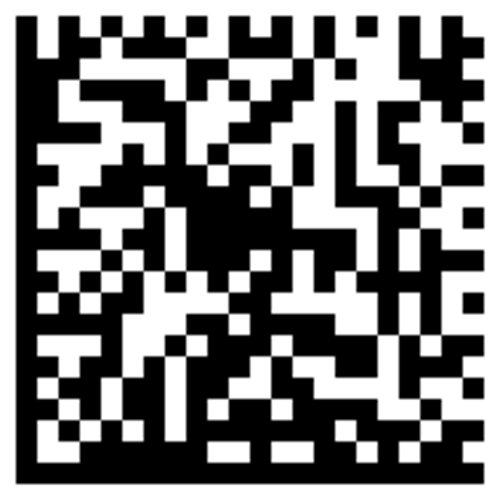
It is getting even more important to have the possibility to mark the piece assembled or tested. This sign realized on the piece could have different functions and could be realized in different ways.
The customization of the product with a specific logo, with the brand or with the name and description of the product itself is today one of the top functions of a marking process. This solution allows to have a “ready” product for the incoming phases of packaging and shipment.
Beside the aesthetic function, the marking process represents also the possibility of write specific codes (serial number, bar code, datamatrix or QR-codes) that lead to the complete history of the pieces in term of assembly procedures, testing results and the big amount of data collected trough the production flow.
All these data are completely stored directly by the Camas machines.
The marking is realized by different methods:
Continuous Ink Jet (CIJ) technology is a contactless marking method that can mark a range of surface at very high speeds (up to 200 m/min [656ft/min]) with high precision. CIJ technology makes marking systems more reliable and extends the interval between regular maintenance, maximizing up-time for production lines and reducing wasted material and the need to rework pieces. It prevents stoppages that often impacts dramatically on the performance of manufacturers in the industry.
In CIJ technology, a high pressure pump injects liquid ink from a tank through a gun and a microscopic nozzle, creating a continuous flow of ink droplets. A piezoelectric crystal creates an acoustic wave when it vibrates inside the body of the gun. This causes the flow of liquid to break into drops at regular intervals. At Camas we can integrate ink jet systems into our assembly and testing lines. These systems are ideal for flat or curved surfaces.
At Camas, our technical expertise allows us to integrate ink jet marking systems into our assembly and testing lines.
This type of marking consists of marking a surface through plastic deformation caused by the vibration of a metal striker.
The striker can be moved using pneumatic or electro-magnetic technology.
This technology causes no stress to the material and prevents chip formation.
Marking software generally makes it possible to edit text and create linear and arched texts, graphic tools, and logos in wmf and dxf vector format. Camas can integrate microdot marking systems into its assembly and testing lines.
At Camas, our technical expertise allows us to integrate microdot marking systems into our assembly and testing lines.
Laser marking is a modern procedure that is now widely used to engrave text, designs, geometric shapes, logos, and bar codes on a wide array of materials.
It can achieve perfect results with extremely reduced operating costs.
It includes various marking methodologies: engraving, abrasion, tempering, and color change/frothing. Two- and three-D lasers, with focus finder and integrated check of the marked field.
Selecting the right method depends on the material and quality requirements. Camas can integrate laser marking systems into its assembly and testing lines.
Camas's technical expertise allows us to integrate laser marking systems into our assembly and testing lines.
Pad printing is a process that recreates with high fidelity color designs, images, and text using ink-repellent siliconized rubber pads that can be easily shaped. This technique is specifically designed for industrial use and can be easily installed on production lines, testing stations, and assembly machines. Printing can also be made on uneven surfaces, thanks to the soft print pad that can easily adapt to the various shapes it is pressed against. Pad printing is known as the best technique for printing on non-flat objects, but it is also perfectly suitable for flat surfaces. Despite a potential wide scope of application, its mainly used to print hard and semi-hard pieces that are relatively small in size. It is highly valued in cases that require multicolor printing during a single cycle, fast drying times, and when the highest print quality is required, especially on narrow sections that are difficult to reach with silk screening. Thanks to its incredible adaptability to surfaces and materials, it is employed in a wide variety of commodity sectors: toothbrushes; coffee cups; oven, radio, and television knobs; remote controls; telephones; watch faces; keyboards; monitors; eyeglass frames; ski boots; cosmetic bottles; and washing machine front panels. Camas can integrate pad printing systems into its assembly and testing lines.
At Camas, our technical expertise allows us to integrate pad printing systems into our assembly and testing lines.